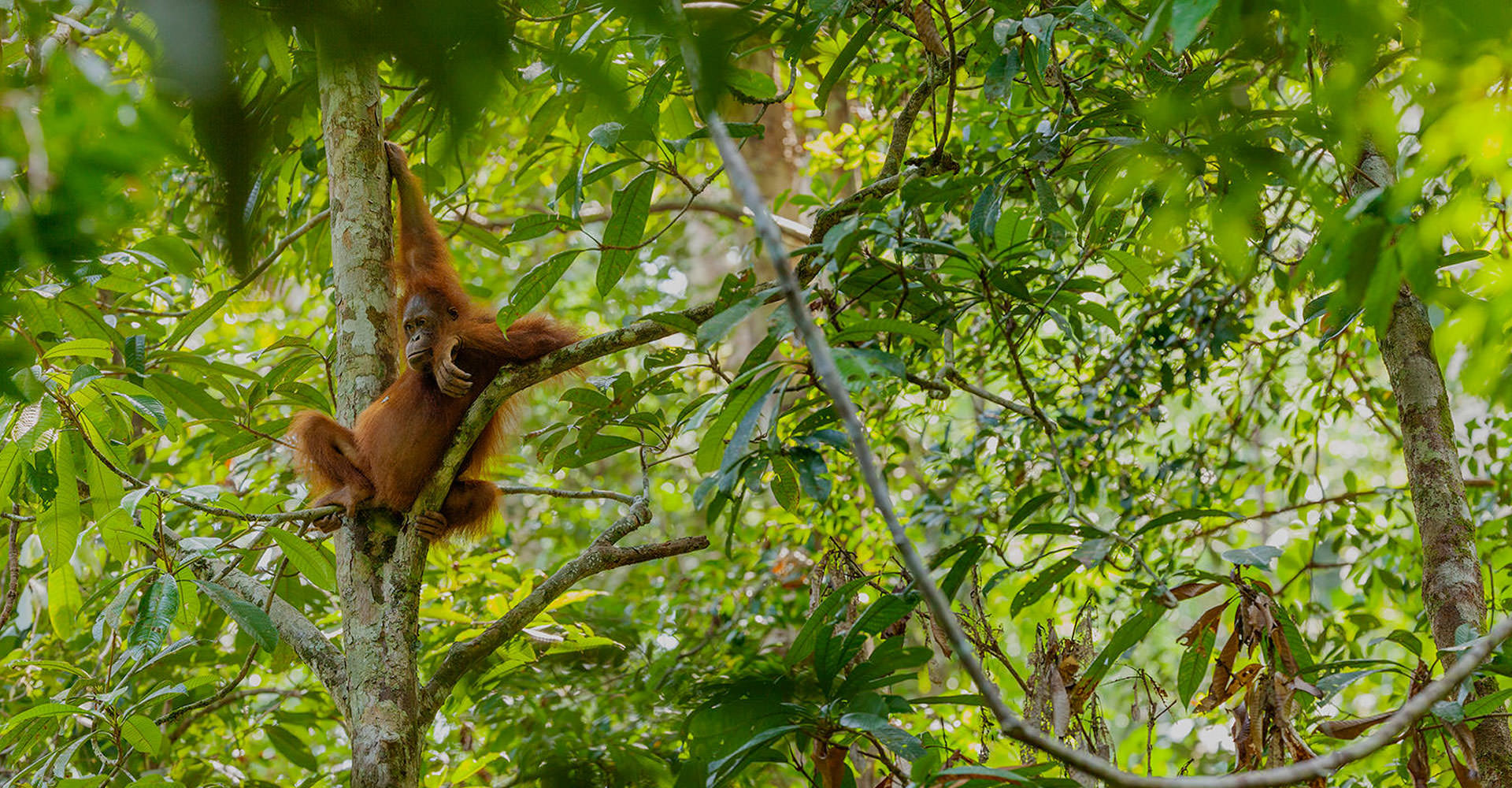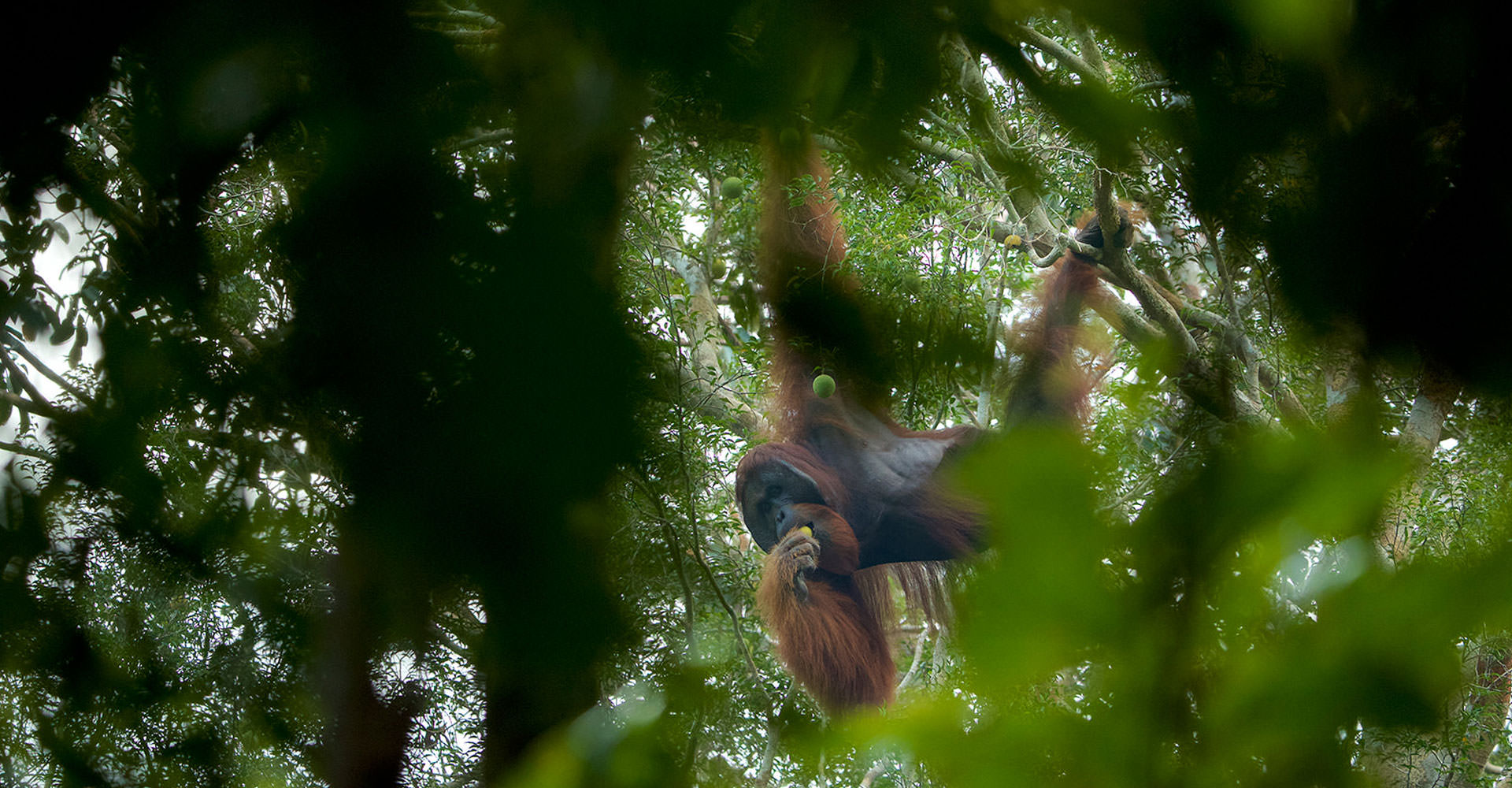
Tim Laman is a field biologist and wildlife photojournalist. Tim first went to Borneo in 1987 and his pioneering research in the rain forest canopy led to a PhD from Harvard and his first National Geographic article in 1997...
Ambassador profile
WHERE HAVE I BEEN? BORNEO

When you get a close look at an orangutan’s hand, you can’t help but notice how similar they are to human hands. You make the connection: we are fellow great apes. That is one reason I like photographing orangutans so much even though it is a lot of work. It is amazing to spend time with them, see how similar they are to us in so many ways, and try to document their lives with photos that tell their story.
I am Tim Laman, a field biologist and wildlife photojournalist. In 1997, my research in the rain forest canopy in Borneo led to a Harvard PhD and my first National Geographic article publication. Since then, I have pursued my passion for exploring wild places and documenting the little-known and endangered wildlife by photographing over twenty stories for National Geographic. I’d like to share this story about one of my favourite subjects to photograph, Orangutans in the wild.
I am completely soaked in sweat. If I took off my T-shirt, I could wring out about a half liter of water from it. I am not on any trail. I’m bushwhacking through the rain forest in Borneo. Why? I am trying to photograph a wild orangutan moving steadily through the trees above me. I could just follow her at a comfortable distance behind, but then I wouldn’t get a single interesting picture. So I am scrambling up the hill ahead of this young female orangutan, trying to anticipate which tree she will pass through, and find a gap through the foliage to get a view. Under my arm, I am carrying my Canon camera and 200-400 mm f4 lens mounted to my trustworthy Gitzo tripod. It’s critical to have my camera and tripod ready for quick deployment. I may only have a few seconds when the orangutan comes into view.
Although it is tough climbing up these hills, I actually like the hilly terrain best for photographing orangutans because it gives me a chance to get eye-level shots, and convey that feeling of being up in the canopy. Orangutans are the largest tree-dwelling creature on the planet. The big males weigh up to 90 kg, and females about half that. It is remarkable how they can move through the trees so well, aided by their huge hands with very long fingers, and especially their gripping toes. Differing from us humans, they have much longer toes, and also an opposable big toe, much like our thumb. This is a huge help in climbing trees. I’m not so good at climbing trees. I can do it with ropes, but if I did, it would take so long that by the time I got up there, the orangutan would be long gone. Being a human, I’m faster on my feet, so that’s why I’m trying to run up a hill with my camera and tripod. I like to avoid having a bright sky behind my subject, so I try really hard to get in the right position for a green background.
When you get a close look at an orangutan’s hand, you can’t help but notice how similar they are to human hands. You make the connection: we are fellow great apes. That is one reason I like photographing orangutans so much even though it is a lot of work. It is amazing to spend time with them, see how similar they are to us in so many ways, and try to document their lives with photos that tell their story. I don’t go to a zoo or rehab center where there are tame, former pet orangutans. My goal is to document the behavior of real wild orangutans in their natural habitat. The place I do this the most is called Gunung Palung National Park, and is in the Indonesian Province of West Kalimantan, on the island of Borneo. This park has one of the largest remaining healthy populations of orangutans. My wife Cheryl Knott is a primatologist who has been studying the orangutans of Gunung Palung for over twenty years, so I do admit that gives me an advantage. I can team up with her and her research assistants who follow the orangutans to collect data on everything they do. Working with them is a huge help in finding these elusive apes in the vast rain forests of Gunung Palung. But the photography is up to me.
The biggest challenge in photographing orangutans, besides just getting yourself into a good position, is the light. The trees block most of it. And the orangutans are especially active early and late in the day doing interesting things when light levels are low. So a tripod is crucial, even with modern cameras that can produce quality images at high ISO. Working from a tripod allows me to push the limits and get sharp images in marginal light. Orangutans are not fast moving animals. They are very different from flying birds, for example, so you don’t necessarily need a high shutter speed to freeze the action. Many of my images, including those I’m sharing here, are made at shutter speeds below 1/60 sec. Some of these images were even made at 1/20 or 1/30 sec, which is a very slow shutter for a 400 mm lens. A stiff but lightweight tripod makes all the difference for getting sharp images at these shutter speeds. I use an extra tall Gitzo Systematic series 3 tripod that allows me to aim the camera somewhat upward and still stand up straight, because it gets tiring if you have to hunch over behind your tripod. The extra height is also very helpful when shooting on steep hills because you can have one or two legs going down the hill to level the tripod. I also really like the fact that Gitzo tripod legs have no knobs or levers to get caught on vines and saplings as you are moving through the forest. The streamlined legs let you move the tripod around quickly while without getting caught on things.
So I’ve gotten ahead of the orangutan and I think I see the tree where she may be heading to eat some flower buds, a favorite food. I find a window through the lower forest branches, and swing my camera and tripod into position. I even have a chance to quickly wipe the sweat off my brow. And yes, this time I have guessed right and she hangs by one arm right in the open while she feeds... Click!

nature & wildlife solutions
Gitzo new, full line of nature and wildlife products are designed to integrate
seamlessly to guarantee the highest level of functionality in the field






































